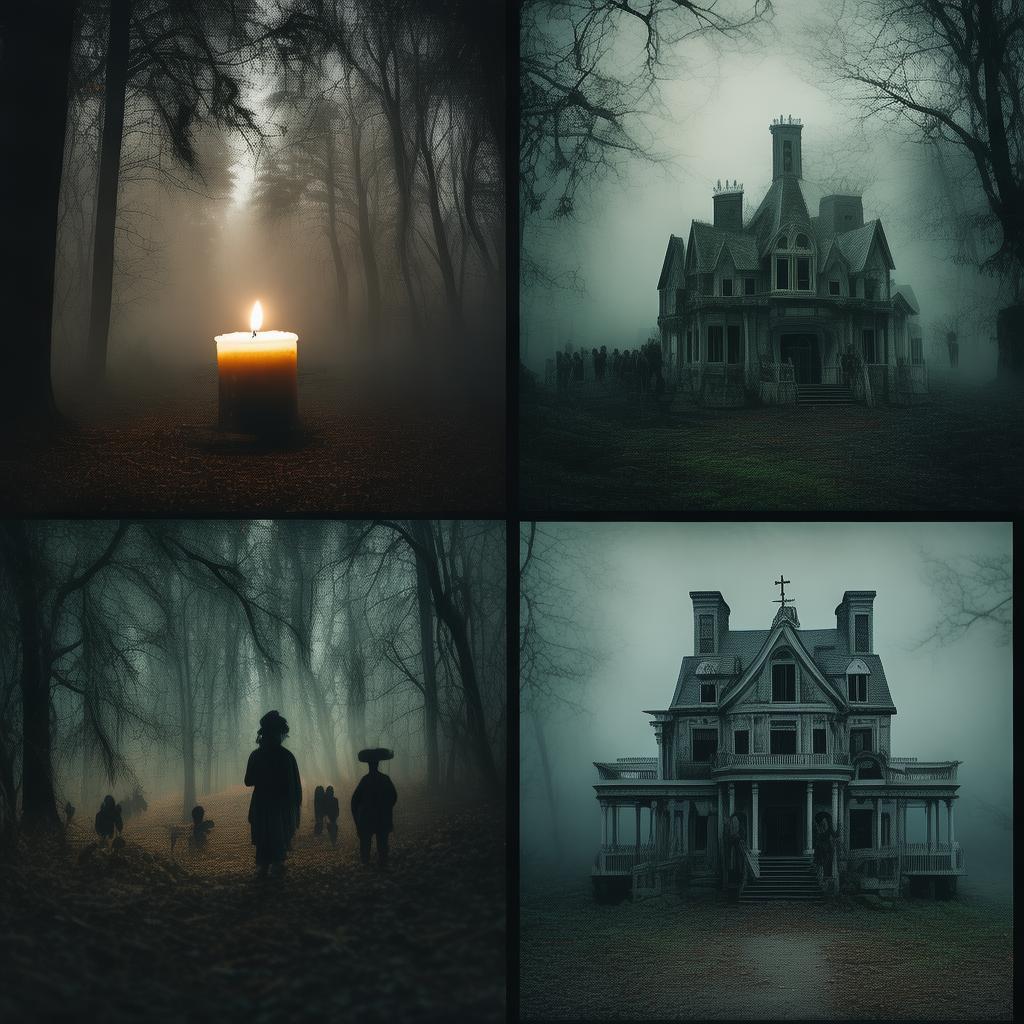The Haunting of the Laughing Man
The town of Eldridge was a place where the past seemed to linger longer than the present. Its cobblestone streets were lined with buildings that whispered tales of yesteryears, and the old theater, known as the Gaiety, was one of the town's most enduring mysteries. The Gaiety had seen better days, its once vibrant marquee now faded and peeling, but it was still a beacon of the town's history, a place where laughter and sorrow had mingled for decades.
One crisp autumn evening, a group of local theater enthusiasts decided to stage a play, hoping to breathe new life into the old venue. They had chosen a farcical comedy, "The Haunting of the Laughing Man," a story about a ghostly figure who amused the living and amused himself with a series of slapstick antics. Little did they know, they were about to become part of the play's plot.
As the night of the opening performance approached, strange occurrences began to plague the theater. The actors would find their lines jumbled, props misplaced, and the stage manager, Mr. Thompson, would come to the dressing room to find his costume drawers rifled through. The townsfolk whispered about the theater's ghost, but no one had seen the figure, and it seemed as though the laughter was just a figment of the imagination.
The night of the play, the audience was a mix of curious townsfolk and the cast and crew. The lights dimmed, and the curtain rose to reveal the set, complete with a grand piano and a makeshift stage. The lead actor, Sarah, stepped forward, her voice steady as she began the opening lines.
As the play progressed, the laughter of the ghost seemed to echo through the theater, punctuating the slapstick moments with eerie precision. The audience was captivated, their laughter mingling with the ghostly chuckles. The actor playing the part of the laughing man, Mr. Harris, found himself increasingly drawn into the role, his performance becoming more and more exaggerated.

Midway through the second act, the laughter grew louder, more insistent. The actors, now aware of the ghost's presence, began to feel a strange compulsion to perform their roles with even more enthusiasm. The audience, caught up in the spirit of the play, joined in the laughter, and the atmosphere was electric.
As the play reached its climax, the ghostly figure finally made its appearance. It was a man, tall and gaunt, with a face twisted in a perpetual grin. He moved with a grace that belied his spectral nature, weaving through the audience and the cast with ease. The laughter grew louder, and the man began to perform his own slapstick routine, mimicking the actors' movements with eerie accuracy.
The audience was mesmerized, their eyes wide with a mix of fear and fascination. The actors, now in on the joke, began to play along, their performance becoming even more over-the-top. The ghostly man danced and twirled, his movements a blend of comedy and tragedy, as if he were both the star of the show and the audience's secret confidant.
As the play reached its end, the ghostly figure bowed to the audience, his laughter echoing through the theater. The curtain fell, and the audience erupted into applause, their laughter a testament to the night's success. The actors, breathless and exhilarated, took their bows, their faces painted with a mixture of relief and wonder.
The next morning, the townsfolk awoke to find the Gaiety theater in disarray. Props were scattered, costumes were torn, and the set was in ruins. The cast and crew were nowhere to be found, and the theater was locked tight. The townsfolk were baffled, their laughter from the night before now tinged with fear.
As the days passed, the townsfolk began to speak of the ghostly figure, the laughing man who had amused them and then vanished without a trace. The Gaiety theater remained closed, its marquee silent and forgotten. But the laughter of the ghost lived on in the memories of those who had witnessed the spectral farce, a reminder that sometimes, the line between reality and illusion is as thin as the veil between life and death.
✨ Original Statement ✨
All articles published on this website (including but not limited to text, images, videos, and other content) are original or authorized for reposting and are protected by relevant laws. Without the explicit written permission of this website, no individual or organization may copy, modify, repost, or use the content for commercial purposes.
If you need to quote or cooperate, please contact this site for authorization. We reserve the right to pursue legal responsibility for any unauthorized use.
Hereby declared.









